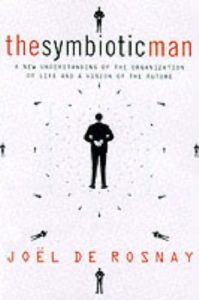Join getAbstract to access the summary!

Join getAbstract to access the summary!
Joel De Rosnay
The Symbiotic Man
A New Understanding of the Organization of Life and a Vision of the Future
McGraw-Hill, 2000
What's inside?
The environment is connected to industry, the Internet is connected to the supermarket, speed is connected to success, and the man in the middle has to pull them together, or get pulled apart.
Recommendation
Joël De Rosnay’s book is a gold mine of provocative ideas about the evolution of mankind, economics, politics and more. It pulls together information from organic chemistry, computer technology, chaos theory and a slew of unrelated fields to argue for a less egocentric approach to business and government. In the process, it redefines competitiveness and industry. This eloquent presentation is definitely not a light read. It is mind-boggling in scope but fractal in delivery - which means you can delve into virtually any section and get a feel for its message. Business wisdom is spotty here, but this is not a business book. Instead, it’s more of a cross between Wired magazine and an intricately researched science fiction novel. It is not for the faint of heart (or brain), but getAbstract.com recommends it, if you’d like to stimulate your mind, shake up your old beliefs, check the inventiveness of bold technological projections, or glimpse an exciting future.
Summary
About the Author
Joël De Rosnay, Ph.D., who received his doctorate in organic chemistry from the Pasteur Institute, is Director of Strategy for the Science and Industry Complex in La Villete, Paris. He worked as a research associate at MIT. He also worked for the European Enterprises Development Company, a venture capital group specializing in new technological companies.


















Comment on this summary